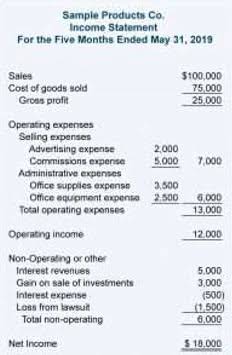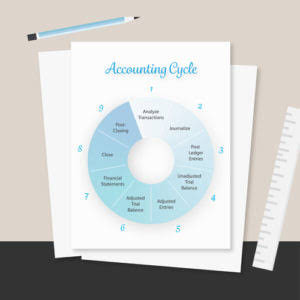
This means if she wants to be profitable for the year, all of her other costs must be less than $650,000. Conversely, Monica can also view the $650,000 as the amount of money that can be put toward other business expenses or expansion into new markets. Adjusted EBITDA in fiscal 2024 was $95 million, an increase of 15% compared to the prior year. The increase was driven primarily by productivity, partially offset by inflation.
- Companies and investors can determine whether the operating costs and overhead are in check and whether enough profit is generated from sales.
- Adjusted EBITDA margin was 9.4% compared to 10.8% in the prior year period.
- Gross Margin is the profitability of a business after subtracting the cost of goods sold from the revenue.
- The more important metric is how your company’s gross profit margin changes.
Gross profit margin ratio: What is it and how to use it
When a company has a higher profit margin, it means that it operates efficiently. It can keep itself at this level as long as its operating expenses remain in check. To calculate a company’s net profit margin, subtract the COGS, operating expenses, other expenses, interest, and taxes from its revenue. Then, divide this figure by the total revenue for the period and multiply by 100 to get the percentage. Compare companies’ gross profit margins within the same industry to identify which companies are performing well and which are lagging. Segment gross profit in fiscal 2024 was $231 million, a decrease of 12% from the prior year.

Product mix
Operating profit is a slightly more complex metric, which also accounts for all overhead, operating, administrative, and sales expenses necessary to run the business on a day-to-day basis. While this figure still excludes debts, taxes, and other nonoperational expenses, it does include the amortization and depreciation of assets. Also, the gross profit margin can be computed as 1 − Cost of sales ratio.
- Companies strive for high gross profit margins, as they indicate greater degrees of profitability.
- However, if a business grapples with rising material costs, wage inflations, or inefficient production processes, its COGS might escalate, exerting downward pressure on the gross margin.
- You expect accounts receivable and inventory balances, for example, to convert into cash over a period of months.
- But when you focus on ways to increase customer retention, you can continue to make sales to the same people over and over without the expense of lead generation and conversion.
- The gross margin and the net margin, or net profit margin, are frequently used in tandem to provide a comprehensive look at a company’s financial health.
- A company’s operating profit margin or operating profit indicates how much profit it generates from its core operations after accounting for all operating expenses.
Gross Margin Ratio Definition and Formula
Companies can measure the efficiency of their operations by calculating their gross profit margin ratio, also known as a gross margin ratio. This ratio compares gross profits to the direct costs that go into manufacturing and selling a company’s products. gross margin accounting In accounting and finance, a profit margin is a measure of a company’s earnings (or profits) relative to its revenue. This guide will cover formulas and examples, and even provide an Excel template you can use to calculate the numbers on your own.
Compare It to Your Company’s History
- Gross profit margin is an important metric for measuring the overall financial health of your business.
- So, as you can see, Proctor and Gamble’s gross margin is positioned between these two peers and well above the sector average.
- Analysts use a company’s gross profit margin to compare its business model with its competitors.
- For more than 30 years, Hain has intentionally focused on delivering nutrition and well-being that positively impacts today and tomorrow.
- It’s also a great way to get started when assessing any income statement.
By analyzing and optimizing workflows, businesses can reduce wastage and improve operational efficiency, which leads to cost savings. Improving gross profit is critical for businesses that want to enhance profitability and operational efficiency. The importance of gross margin in business cannot be overstated, as it is a vital indicator of financial performance and profitability.
Great! The Financial Professional Will Get Back To You Soon.

This strong performance enabled us to reduce net debt by $86 million over the course of the year, and drive improvement in our leverage ratio to 3.7x. Reduction in net debt remains a top priority as we progress towards our leverage goal of 2x to 3x by fiscal 2027,” stated Lee Boyce, CFO. Accounting software can help business owners post accounting transactions and create invoices quickly, which reduces costs. Capital is money invested in the company to purchase assets and operate the business. A well-managed business works to increase its return on company capital. The earlier plumbing example above illustrated the importance of earning a return on the assets you purchase and company equity.
